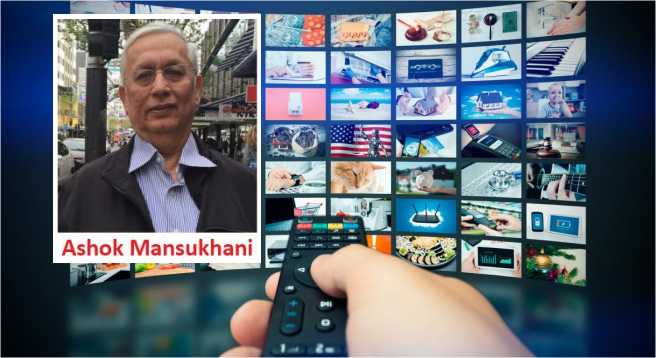By Ashok Mansukhani
- Let me give you some background. In 2002, a new Section 4A was introduced into the Cable Act 1995 to provide a new Conditional Access System (CAS) regime. The main objective was to empower the viewer to select pay channels of his choice and pay only for those channels, tailoring his cable needs to his purse and needs.
- CAS was initially to be introduced in the four metropolitan cities. Certain parts of the industry tried to scuttle the new regime but ultimately failed to stop it. In December 2003, the Delhi High Court, in CWP 8993-4/2003 in Consumer Coordination Council v. Union of India, permitted the Conditional Access System (commonly called CAS) to be introduced in Delhi. It allowed the new regime to advance but expressed the view that a Regulatory Body needed to be appointed to safeguard the consumer interest.
- By notification No. SO 44(E) dated January 9, 2004, the Government, therefore, invoked proviso k to Section 2 (1) of the Telecom Regulatory Authority of India Act (TRAI )1997. This gave TRAI various inherent powers on Tariff and Interconnection and Quality of Service. The Government granted it certain additional powers, like an advertisement cap on the number of minutes to be telecast in an hour of broadcast, the future of CAS etc.
- At that time, there was a view that a Converged Regulator would ultimately be brought in (a blueprint was already available in the draft Convergence Act of 2001), so many in the industry saw TRAI as a temporary Regulator. There was also an expectation that the Broadcast Bill of 1997 setting up a Broadcast Regulator, which had fallen through, would be replaced by a new Bill. That did come in 2007 but never got enacted. It is quite another fact of life for the industry that TRAI continues to regulate the industry to date.
- One of the key powers of TRAI is to fix the rates of channels under Section 11 (2) of the TRAI Act. As a result, right from the beginning, Tariff fixation, effective Interconnection and Quality of Service have been vital regulatory objectives of TRAI.
- Broadcasters have, in the considered view of this writer, yet to fully come to terms with the appointment of TRAI as the industry regulator and have mounted very serious legal challenges many times to the Authority of TRAI. These litigations have, not in any way, diluted TRAI’s resolve to create a level playing field for the industry.
- Their first serious challenge came as early as 2005, which led to a batch of petitions being decided by the Delhi High Court in Star and Ors vs Trai in Writ Petition 24105/2005 dated 09.07.2007 in which the High Court held:
- “The abiding and enduring intention of the legislature is that Broadcasting should be monitored by a distinct statute and till such time as that does not happen, the TRAI Act would regulate this activity if the Government so desires. (Para 30.).
- In conclusion, therefore, the fixation of tariffs by the Authority is within their competence, even in regard to Broadcasters. The devising of an upper limit of pay channels will have the effect of wider dissemination and viewership, thereby safeguarding the pre-eminent right of the citizenry in the context of freedom of speech and expression. We are steadfast in this verdict even on thetouchstone of Articles 14, 19(1)(a) or 19(1)(g) and/or 301 to 307 of the Constitution. (Para 39)
8. The Supreme Courtdismissed the Special Leave Petitions.
9. The next serious challenge was filed more than a decade later. By a further amendment of the Cable Act 1995, the mandatory Digital Addressable Systemregime came into force in 2012. At that time, the Tariff Regime was based on a series of orders passed under Section 11 (2) of the TRAI Act for analogue tariffs.
10. In 2016,TRAI came out with a Consultation Paper and new Regulations and Tariff Order in 2017, popularly known as New Tariff Order. These Regulations and the Tariff Order, too, got challenged- this time in the Madras High Court.
11. A series of prolonged hearings ensued in the case of Star India and Ors vs theDepartment of Industrial Promotion and Policy in Writ Petition WP Nos.44126 and 44127 of 2016 and other petitions. Apart from challenging specific clauses of the Interconnection Regulations and the Tariff Order, Star again challenged the power of TRAI, claiming that TRAI has the power to regulate only the ‘means of transmission,’e., ‘carriage’ aspect of Telecommunication and Broadcasting and has no power to regulate the content of the broadcast.
12. It challenged the 2017 Regulationson whether TRAI could regulate content and directly affect the pricing and marketing of a television channel, thereby resulting in “interference” with the content of the broadcast. The primary rationale of the challenge was that impugned clauses of the 2017 Regulations had the impact of regulating the pricing and terms and conditions of licensing of television channels and their underlying content, which according to Star, is protected under the Copyright Act and over which TRAI had no jurisdiction.
13. Due to a split judgment in the Madras High Court, the matter was put up to a Third-Member Bench. The judge in the Third Member Bench also agreed with the Chief Justice and rejected the Starappeal substantially stating in Para 27.1 of the judgment dated 05.2018 that:
In her short, clear decision, the Hon’ble Chief Justice has held that there is the sufficiency of the power under the TRAI Act as against the Indian Copyright Act, 1957. They travel in their respective paths, not intended to cross. The scope of the amendments made in 2012, along with Section 37, was correctly dealt with.
14. Star filed an appeal vide Civil Appeal Nos.7326-7327 of 2018to the Supreme Court, where it also lost the case. The judgment delivered on 10.2018 stated interalia:
- The Explanatory Memorandumshows that the Authority’s focus has always been providing a level playing field to both Broadcaster and subscribers. For example, when high discounts are offered for bouquets that are offered by the Broadcasters, the effect is that subscribers are forced to take bouquets only, as the a-la-carte rates of the pay channels that are found in these bouquets are much higher. This results in the perverse pricing of bouquets vis-a-vis individual pay channels. In the process, the public ends up paying for unwanted channels, thereby blocking newer and better TV channels, and restricting subscribers’ choices. It is for this reason that discounts are capped.
- While doing so, however, full flexibility has been given to Broadcasters to declare the prices of their pay channels on an a-la-carte basis. The Authority has shown that it does not encroach upon the freedom of Broadcasters to arrange their business as they choose. Also, when such discounts are limited, a subscriber can then be free to choose a-la-carte channels of his choice. Para 37.
15. Finally, the New Tariff Ordercame into force in March 2019. Its salient features included:
- A viewer would have complete freedomto choose what he/she wishes to watch and pay only for that.
- All channels would be offered on an a-la-cartebasis, and the MRP had to be displayed on the TV screen through the Electronic Program Guide (EPG).
- The Broadcasters and Distributors could offer bouquets of channels as prescribed. The price of the bouquet would be required to be published transparently.
- The new framework provided complete transparencyon the Pay Channel pricing structure whereby no Distributor could charge above the MRP declared by a Broadcaster.
- All the free-to-air channels would be available to subscribers free of cost.
NEW TARIFF ORDER 2.0: Rationale and Controversy
1. The industry and viewers had barely settled to coming to terms with the features of New Tariff Order 1(NTO:1) when a new Consultation Paper was introduced to amend the Tariff Order in just five months. The new Paper stated that:
- Reasonable expectations were cast upon the Broadcasters that they should exercise the flexibilitygranted to them in a fair and responsible manner with due consideration to the rights and aspirations of the consumers. However, this appears to be not the case.
- The Authorityobserved from the tariff declared by the broadcasters under the new regulatory framework that Broadcasters are offering bouquets at a discount of up to 70 per cent of the sum of a-la-carte rates of pay channels constituting those bouquets.
- It indicated that in the absence of any restriction on the discount on the offering of bouquets, Broadcasters were making prices ofa-la-carte channels illusory, thereby impacting the a-la-carte choice of channels by consumers and giving huge discounts on bouquets to push even those channels which are not the choice of subscribers.
2. TRAIobserved that too many bouquets had been formed by the broadcasters/distributors, and many contained the same set of channels, with very few changes. These create confusion among consumers and become a hurdle in choosing the channels by consumers.
3. TRAI raised a series of queries. One key question was to elicit views on steps to ensure unwanted channelswere not pushed onto consumers. It also asked whether a cap on discount on the sum of a-la-carte channels forming part of bouquets while forming bouquets by Broadcasters be re-introduced.
4. After several consultations, the New Tariff Order 2was issued on 01.2020. A Press Note on NTO 2 was issued on 13.01.2020 by TRAI stating that:
- Network Cable Fee (NCF) facilitates adequate returnsto DPOs, thereby facilitating the upgradation of their networks, giving better services to consumers, and ensuring business certainty.
- The Broadcasters also benefited by getting full freedom andflexibility to decide the price of their Television Channels.
- However, the intended benefit for consumers to enable the freedom of choice could not be achieved completely due to misuse of available flexibilityby a group of service providers.
5. The Press Note summarised the main changes as under:
- Now, a consumer would enjoy 200 SD(plus mandatory channels) Television channels at a basic NCF of Rs. 130/- per month.
- Introduction of time-tested and industry-accepted twin conditionsbetween the prices of pay channels on an a-la-carte basis would ensure a reasonable relationship with the bouquet price.
- Reducing the ceiling priceof the pay channel for inclusion in any bouquet from Rs.19 to Rs.12 would ensure a fair packaging of bouquets. This would provide a reasonable channel price on an a la carte basis.
- The Carriage Fees were cappedat Rs. four lakhs (Rs. 4 Lakh) per Standard Definition Channel per month for a DPO.
6. As NTO 2came just a year after hard-fought litigation on the New Tariff Order, Broadcasters filed a fresh round of litigation in the Bombay High Court. DPOs filed against LCN placement in Kerala High Court and got partial relief. Due to lockdown delays, the Bombay High Court, in Writ Petition No 680 of 2020, ultimately decided the batch of appeals only on 06.2021. The Court substantially rejected the Broadcasting Appeals.
7. In Para 106, the High Court held that:
- The challenge to the constitutional validity of Section 11 of the Telecom Regulatory Authority of India Act, 1997 (so far as it relates to Broadcasting services)
- It upheld the 2017 Interconnection Regulations and Tariff Order.
- It also upheld he 2020 Regulations and Tariff Orders. However, it struck down barring the second twin condition (Average Test) contained in the proviso to clause (3)(b) of The Telecommunication (Broadcasting and Cable) Services (Eighth) (Addressable Systems) Tariff (Second Amendment) Order, 2020. The HC held it was arbitrary, being contrary to the mandate of Section 11(4) of the TRAI Act of ensuring transparency and violating the Petitioners’ fundamental rights under Article 14 of the Constitution.
8. The Broadcasters filed an appeal in the Supreme Court against the Bombay High Court, claiming the High Court had “snatched away the fundamental rights of the Broadcasters by allowing TRAI to impose restrictions in the public interest.” They also challenged various provisions of the amended Tariff 0rder (NTO 2.0), including bringing MRP down to Rs 12, imposing twin conditions, and placing restrictions on bouquet discounting.
9. The Supreme Court admitted the Appeals filed by the Broadcasters but did not grant any stay. Pleadings were completed by early 2022. Meanwhile, there was a change in the Ministry’s senior leadership and TRAI, leading to some behind-the-scenes dialogue between Broadcasters and the Government and Regulator. Some discussions with DPOs, too, happened.
10. Ultimately, in February 2022,the Broadcasters withdrew their appeals in the Supreme Court, keeping questions of law open in the expectation of a new Consultation Paper by TRAI assuaging their concerns.
New Consultation Paper
- The new Consultation Paper issued on 05.2022raised the following vital queries:
- Should TRAI continue to prescribe a ceiling priceof a channel for inclusion in a bouquet?
- What steps should be taken to ensure that popular television channels remain accessibleto a large segment of viewers?
- Should there be a ceilingon the discount on the sum of a-la-carte prices of channels forming part of bouquets while fixing the MRP of bouquets by Broadcasters?
- Should channel prices in bouquets be homogeneous?
- Should the maximum retail price of an a-la-carte pay channel forming a bouquet be cappedwith reference to the average prices of all pay channels creating the same bouquet?
- Should there be any discount, in addition to the distribution fee, on MRP of a-la-carte channels and bouquets of channels to be provided by Broadcasters to DPOs?
2. At the request of service providers, TRAI recently extended the implementation date of NTO 2to February 28, 2023. The Broadcasters will have to file their rates to the Regulator by 11.2022., The DPOs will have to announce their rates to subscribers by 31.12.2022.
FUTURE OF NTO 2.0
- A review of Broadcaster Associations and Multi System Operators’ replies to the new Consultation Papershows a vast cleavage between what Broadcasters want and what MSOs/DTH operators desire.
- The Indian Broadcasting and Digital Federationhas claimed that the time is ripeto implement a forbearance model, at least vis-à-vis the pricing of channels and packaging of such channels. Assuming that forbearance cannot be implemented immediately, at least the framework for sunset provisions relating to the price/packaging of channels should be identified and notified.
- 3. The News Broadcasters & Digital Federationsuggests a separate Consultation Process be initiated to address the members’ concerns of NBDA as the New Regulatory Framework (of 2017implemented in 2019) has “not been implemented in letter and spirit by DPOs”, nor have the anticipated benefits accrued to the News Broadcasters.
- The All-India Digital Cable Federationlaments that the foremost challenge to be faced by the entire Broadcasting and Cable services industry is that there is a trend of constant decline in subscriber base for MSOs and DTH operators. Any attempt to redress the falling subscriber numbers across the industry cannot be made without creating a level playing field and appreciating how the Broadcasters participating in the Cable TV and OTT platforms are distorting the decision-making and approach of Broadcasters towards the Cable TV medium. Due to price forbearance given to Broadcasters, the driver channels are priced too high.
- 5. The DTH Associationdemands that the Authority allow the DPOs to price and package their plans/bouquets without any restrictions to meet the demands of the subscribers, as was the case before the introduction of the NTO regime.
THE WAY FORWARD
- TRAI felt that both Broadcasters and DPOs had ‘misused the beneficial features’of NTO:1. While that could be so, TRAI has sufficient inherent powers under the TRAI Act to issue cease and desist notices to service providers without upsetting the apple cart.
- So, one solution is to scrap NTO:2 entirely instead of continuously extending implementation dates.
- Another solution is that as the 2017 Regulationshave been in force for over three years, TRAI can re-examine all the pay channel tariff data and the bouquet package details filed by Broadcasters and DPOs to determine whether the larger mass of factual data now available, bears out its view of so-called “misuse” of NTO:1 by the service providers.
- It can even commission a nationwide sample survey of viewers to ascertain their feelings about the new regime, which has been working since A similar survey had been done over a decade earlier on the issues of analogue tariff by the Indian Market Research Bureau, which was filed in the Supreme Court.
- In the considered view of this writer, the industry can hardly go back to the Wild West “take it or leave it” pay channel regime, which prevailed in India before the initial introduction of CAS in 2003 and later DAS in 2012.
- On the other hand, content costs are going up, be it sports rights, movie acquisitions, or even standard serials. 2025 would mark 30 years since the advent of pay channels. This writer believes forbearance could be brought in from this date as sunset to the Pay Channel Tariff Regulation, which started in 2004.
- Finally, TRAIwill have a tough time resolving the contradictions in the responses of service providers to the new Consultation Pape One possible solution is for Industry dialogue to bring a mutual consensus and keep consumer interest paramount. TRAI arranged this dialogue, and the Ministry of Information and Broadcasting set up a Task Force which helped in the smooth implementation of DAS in 2012.
- Dialogue is better than expensive litigation. Viewer interest is paramount.
(The author is a media veteran having spent decades with the government and private sector media organizations, specializing in legal and policy matters. He was recently super-annotated from the Hinduja group having been in the leadership team that built the group’s media business and is now a practising high court lawyer based in Mumbai. The views expressed in the write-up are those of the author and Indianbroadcastingworld.com need not necessarily subscribe to them.)
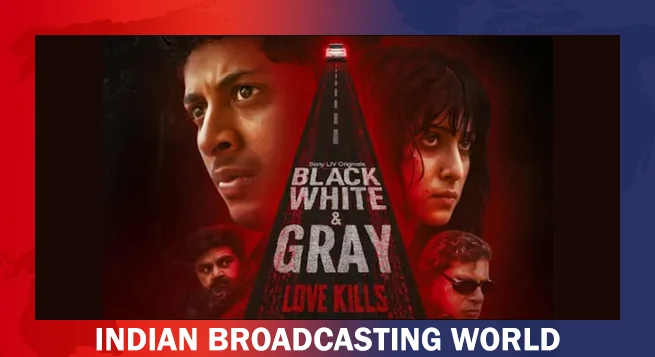 SonyLIV drops ‘Black, White & Gray-Love Kills’ trailer
SonyLIV drops ‘Black, White & Gray-Love Kills’ trailer 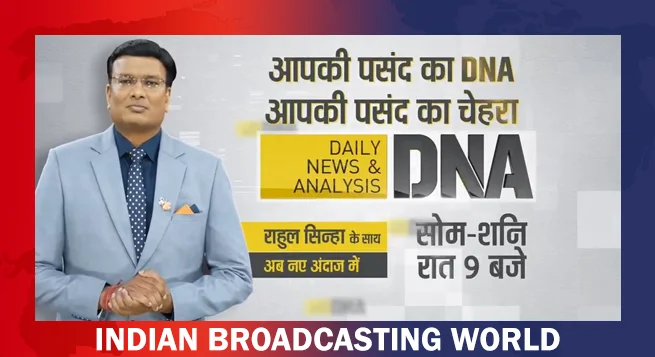 Rahul Sinha takes charge of Zee News’ DNA
Rahul Sinha takes charge of Zee News’ DNA 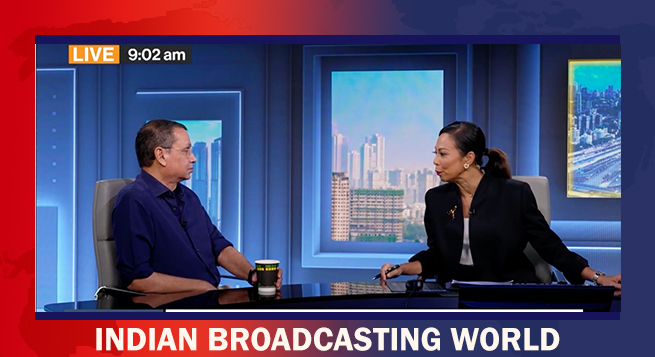 JioStar vice-chair Uday Shankar on surge in streaming subs, trade tariff challenges
JioStar vice-chair Uday Shankar on surge in streaming subs, trade tariff challenges 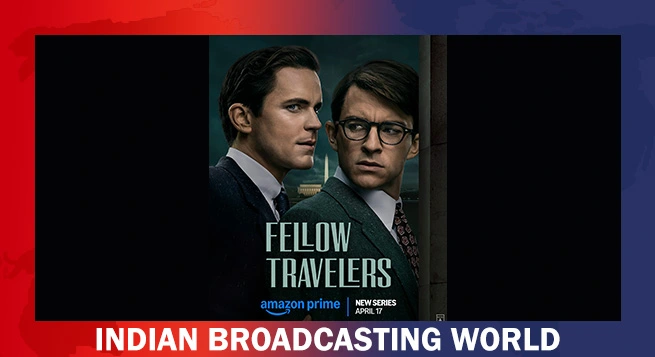 ‘Fellow Travelers’ to stream on Prime Video India from April 17
‘Fellow Travelers’ to stream on Prime Video India from April 17 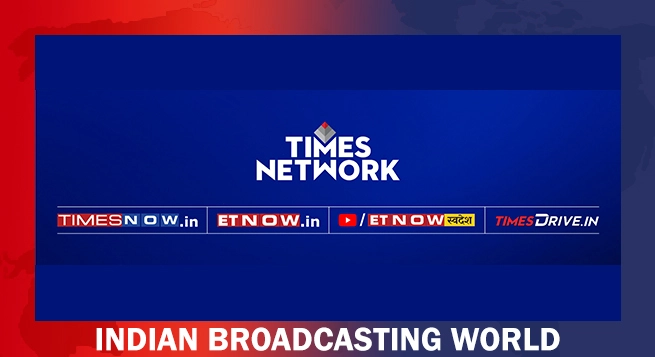 Times Network emerges as digital news powerhouse with 107 mn monthly users
Times Network emerges as digital news powerhouse with 107 mn monthly users 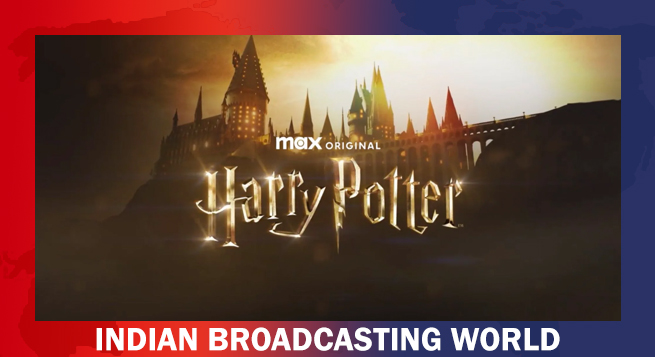 HBO unveils key cast for upcoming ‘Harry Potter’ TV series
HBO unveils key cast for upcoming ‘Harry Potter’ TV series 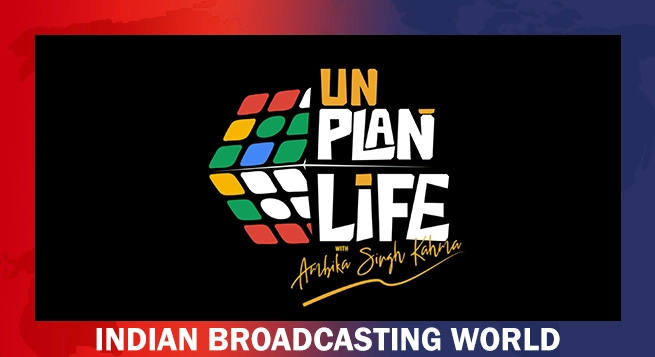 NDTV brings new ‘Unplan Life’ podcast
NDTV brings new ‘Unplan Life’ podcast 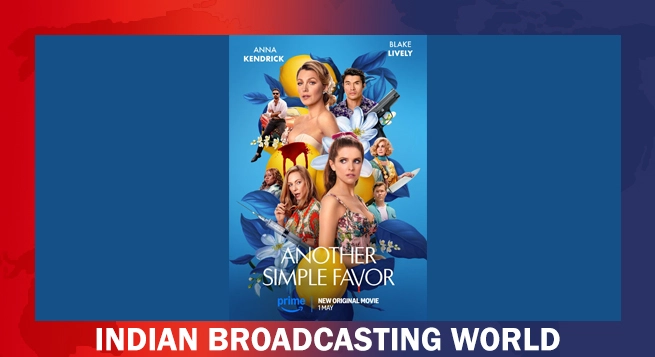 Anna Kendrick, Blake Lively reunite for twisted wedding thriller
Anna Kendrick, Blake Lively reunite for twisted wedding thriller 


